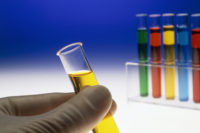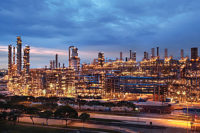Advancing Adhesives: ExxonMobil Announces Major Tackifier Expansion
A new facility will provide the hot-melt adhesives industry with nearly double the global production of hydrogenated tackifier.

ExxonMobil’s chemical plant in Singapore provides a strategic platform for the world's largest hydrogenated hydrocarbon resin plant.



ExxonMobil Chemical Co. has announced plans to build what is reportedly the world’s largest hydrogenated tackifier manufacturing facility at its recently expanded petrochemical complex in Singapore. The new 90-kiloton/year plant will nearly double the company’s capacity to manufacture high-performance Escorez™ 5000 resin for hot-melt adhesive producers worldwide. This will make the new plant 40% bigger than the industry’s largest hydrogenated tackifier plants today.
Hydrogenated tackifier demand is expected to double over the next 15 years. Much of the growth is forecasted to be in Asia, where packaging, woodworking and nonwovens manufacturers increasingly depend on the outstanding performance and cost effectiveness of hot-melt adhesives.
“The largest sector driving this is non-wovens, that’s diapers and adult incontinence, and that’s followed by packaging and assembly,” explains Dwight Tozer, vice president of ExxonMobil’s Adhesion Industry business. “In these areas, there are changing laws, there are greater demands from a quality standpoint, and these are clear demand trends that are favoring the hydrogenated resin. Our latest generation technology is going to help this quite a bit.”
ExxonMobil’s Singapore Chemical Plant provides a unique platform for the added hydrogenated tackifier production. “Singapore is a great location to serve the Asia-Pacific markets, and that’s really where the growth is overall,” says Tozer. “We’ve been doing business there for over 120 years; in fact, we just celebrated that anniversary this past January with the government. Singapore has a strong, stable pro-business government, well-established legal system and a very skilled workforce.”
The site’s two large steam crackers use proprietary technology to process an unprecedented range of feedstocks, including crude oil. Crude cracking produces a wide range of valuable byproducts that can be further upgraded to specialty chemicals such as premium resins for adhesive applications.
“The heavier the molecule you crack, especially as you get into a whole crude, the greater amount of C5 diolefins you create, which is one of the key building blocks to adhesives,” explains Tozer. “As you expand that direction, producing that amount of feedstock, you’ve got a tremendous opportunity for innovation. This allows you to move forward in building resin plants of this size. So we’re very pleased how this innovation allows us to create added feedstock, when feedstocks in other areas of the world have been shrinking.”
The facility incorporates a state-of-the-art hydrogenation reactor system to produce premium tackifiers. The plant will also produce new resins for non-adhesive uses. Construction is expected to begin in the second half of 2014, with completion anticipated in 2017. ExxonMobil has continuously increased its hydrogenated resin capacity since the 1970s with innovations in process technology. With current tackifier production in Baton Rouge, La., and Notre-Dame-de-Gravenchon, France, the new Singapore plant is a strategic addition in global production.
“With these investments, Singapore now is our largest integrated petrochemical complex in the world,” Tozer says. “As a result of these two world-class heavy feed crackers, we have a huge source of C5 adhesive for our plant, and that allows us to build at the scale that we’re talking about now.”
For additional information, visit exxonmobilchemical.com.
Listen to our full conversation with Dwight Tozer at www.adhesivesmag.com/pods!
Looking for a reprint of this article?
From high-res PDFs to custom plaques, order your copy today!








